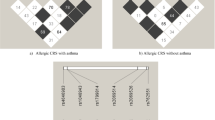Abstract
Objective
Theophylline is metabolized to 1,3-dimethyluric acid (1,3-DMU), 3-methylxanthine, and 1-methylxanthine by CYP1A2 and partly by CYP2E1. Because 1,3-DMU is the major metabolite of theophylline, the 1,3-DMU/theophylline ratio is viewed as a good indicator of theophylline metabolic clearance. Here, we investigated the associations between 1,3-DMU/theophylline ratios and genetic polymorphisms of CYP2E1 and CYP1A2.
Methods
Polymerase chain reaction (PCR) and direct sequencing or PCR-restriction fragment length polymorphism (RFLP) were performed to analyze CYP2E1 and CYP1A2 promoter polymorphisms in 62 Korean asthma patients. Plasma theophylline and 1,3-DMU levels were measured by liquid chromatography-tandem mass spectrometry.
Results
Eleven polymorphisms including Ins96, −1566 T>A, −1515 T>G, −1414 C>T, −1295 G>C, −1055 C>T, −1027 T>C, −930 A>G, −807 T>C, −352 A>G, and −333 T>A were detected in the 5′ flanking region of the CYP2E1 gene (numbering according to GenBank Accession number NT_017795). Of these, five single nucleotide polymorphisms (SNPs) (−1566 T>A, −1295 G>C, −1055 C>T, −1027 T>C, and −807 T>C) were closely linked. Another three polymorphisms (Ins96, −930 A>G, and −352 A>G) and two polymorphisms (−1515 T>G and −333 T>A) were also closely linked. The five closely linked polymorphisms were associated with significantly different 1,3-DMU/theophylline ratios between heterozygotes plus homozygotes of a rare allele (n=23, 0.0368±0.0171) and common allelic homozygotes (n=39, 0.0533±0.0343) (p=0.024 by Mann-Whitney U test). In the CYP1A2 gene, the −2964G>A polymorphisms exhibited a significant difference in 1,3-DMU/theophylline levels between heterozygotes plus homozygotes of a rare allele (n=30, 0.0406±0.0272) and homozygotes of a common allele (n=32, 0.0534±0.0316) (p=0.032).
Conclusion
We confirm that hydroxylation at the 8 position of theophylline (1,3-DMU) is significantly affected by genetic polymorphism in CYP2E1 in addition to CYP1A2.

Similar content being viewed by others
References
Evans WV (1986) Slow release theophylline in chronic bronchitis-a comparative study. Br J Clin Pract 40:245–250
Shannon M (1999) Life-threatening events after theophylline overdose: a 10-year prospective analysis. Arch Intern Med 159:894–989
Ogilvie RI (1977) Clinical pharmacokinetics of theophylline. Clin Pharmacokinet 3:267–293
Gu L, Gonzalez FJ, Kalow W, Tang BK (1992) Biotransformation of caffeine, paraxanthine, theobromine and theophylline by cDNA-expressed human CYP1A2 and CYP2E1. Pharmacogenetics 2:73–77
Jennings TS, Nafziger AN, Davidson L, Bertino JS Jr (1993) Gender differences in hepatic induction and inhibition of theophylline pharmacokinetics and metabolism. J Lab Clin Med 122:208–216
Song J, Park KU, Park HD, Yoon Y, Kim JQ (2004) High-throughput liquid chromatography-tandem mass spectrometry assay for plasma theophylline and its metabolites. Clin Chem 50:2176–2179
Umeno M, McBride OW, Yang CS, Gelboin HV, Gonzalez FJ (1988) Human ethanol-inducible P450IIE1: complete gene sequence, promoter characterization, chromosome mapping, and cDNA-directed expression. Biochemistry 27:9006–9013
Hayashi S, Watanabe J, Kawajiri K (1991) Genetic polymorphisms in the 5′-flanking region change transcriptional regulation of the human cytochrome P450IIE1 gene. J Biochem (Tokyo) 110:559–565
Hanioka N, Tanaka-Kagawa T, Miyata Y, Matsushima E, Makino Y, Ohno A, Yoda R, Jinno H, Ando M (2003) Functional characterization of three human cytochrome P450 2E1 variants with amino acid substitutions. Xenobiotica 33:575–586
Danko IM, Chaschin NA (2005) Association of CYP2E1 gene polymorphism with predisposition to cancer development. Exp Oncol 27:248–256
Obase Y, Shimoda T, Kawano T, Saeki S, Tomari SY, Mitsuta-Izaki K, Matsuse H, Kinoshita M, Kohno S (2003) Polymorphisms in the CYP1A2 gene and theophylline metabolism in patients with asthma. Clin Pharmacol Ther 73:468–474
Wan J, Shi J, Hui L, Wu D, Jin X, Zhao N, Huang W, Xia Z, Hu G (2002) Association of genetic polymorphisms in CYP2E1, MPO, NQO1, GSTM1, and GSTT1 genes with benzene poisoning. Environ Health Perspect 110:1213–1218
Thompson EA, Deeb S, Walker D, Motulsky AG (1988) The detection of linkage disequilibrium between closely linked markers: RFLP at the AI-CIII apolipoprotein genes. Am J Hum Genet 42:113–124
Watanabe J, Hayashi S, Kawajiri K (1994) Different regulation and expression of the human CYP2E1 gene due to the RsaI polymorphism in the 5′-flanking region. J Biochem (Tokyo) 116:321–326
Le Marchand L, Wilkinson GR, Wilkens LR (1999) Genetic and dietary predictors of CYP2E1 activity: a phenotyping study in Hawaii Japanese using chlorzoxazone. Cancer Epidemiol Biomarkers Prev 8:495–500
Kato S, Tajiri T, Matsukura N, Matsuda N, Taniai N, Mamada H, Yoshida H, Kiyam T, Naito Z (2003) Genetic polymorphisms of aldehyde dehydrogenase 2, cytochrome p450 2E1 for liver cancer risk in HCV antibody-positive Japanese patients and the variations of CYP2E1 mRNA expression levels in the liver due to its polymorphism. Scand J Gastroenterol 38:886–893
Huang YS, Chern HD, Su WJ, Wu JC, Chang SC, Chiang CH, Chang FY, Lee SD (2003) Cytochrome P450 2E1 genotype and the susceptibility to antituberculosis drug-induced hepatitis. Hepatology 37:924–930
Tanigawara Y, Komada F, Shimizu T, Iwakawa S, Iwai T, Maekawa H, Hori R, Okumura K (1995) Population pharmacokinetics of theophylline. III. Premarketing study for a once-daily administered preparation. Biol Pharm Bull 18:1590–1598
Acknowledgements
This study was supported by a grant of the Korea Health 21 R&D Project, Ministry of Health & Welfare, R.O.K(03-PJ10-PG13-GD01-0002).
Author information
Authors and Affiliations
Corresponding author
Rights and permissions
About this article
Cite this article
Yoon, Y., Park, HD., Park, K.U. et al. Associations between CYP2E1 promoter polymorphisms and plasma 1,3-dimethyluric acid/theophylline ratios. Eur J Clin Pharmacol 62, 627–631 (2006). https://doi.org/10.1007/s00228-006-0165-4
Received:
Accepted:
Published:
Issue Date:
DOI: https://doi.org/10.1007/s00228-006-0165-4




